Fentanyl fuels a persistent ‘hot spot’ at Seattle’s 12th and Jackson. What will it take to fix it?
 1 of 8Seattle’s Little Saigon neighborhood is shown as the sun goes down on Thursday, March 20, 2025, in Seattle.
1 of 8Seattle’s Little Saigon neighborhood is shown as the sun goes down on Thursday, March 20, 2025, in Seattle. T
he crowd around 12th and Jackson is ever present, although the hundred or so people here change day by day. They come here to buy and smoke fentanyl or sell stolen groceries or clothing on the sidewalk to raise the money it takes for a hit. They come here, typically, to escape their pain.
For years now, the eyes of much of Seattle’s political establishment has been fixed on this particular street corner in Seattle’s Little Saigon neighborhood.
RELATED: A grassroots effort to make Seattle's Little Saigon safer
This intersection, and the blocks around it, is an example of what city leaders call a “hot spot” — an area of disproportionate drug use and crime. A report by the city auditor’s office found that the area around 12th and Jackson had one of Seattle’s highest concentrations of drug overdoses and crimes against people: 109 such incidents, combined, over a one-year period.
Many people who frequent 12th and Jackson are homeless, but not all, and those who are homeless generally don’t live there. Instead, an underground market for drugs and stolen goods has existed at the spot for more than a decade, growing more visible over the past several years with the rise of fentanyl, a synthetic opioid many times more powerful than heroin, and far cheaper — at times, the cost has sunk to less than $1 per pill.
Shops and restaurants near the corner have closed while others have fortified themselves, putting up chain-link fences crowned with barbed wire. Hoa Mai Park, a cascade of grassy terraces the city opened last year in an attempt to “activate” the area, is now mostly an extension of the underground market.
For years, people who live and work in this largely Asian-American, immigrant community have begged for help from the city. But, so far, the problems at this intersection have survived every attempt to address them.
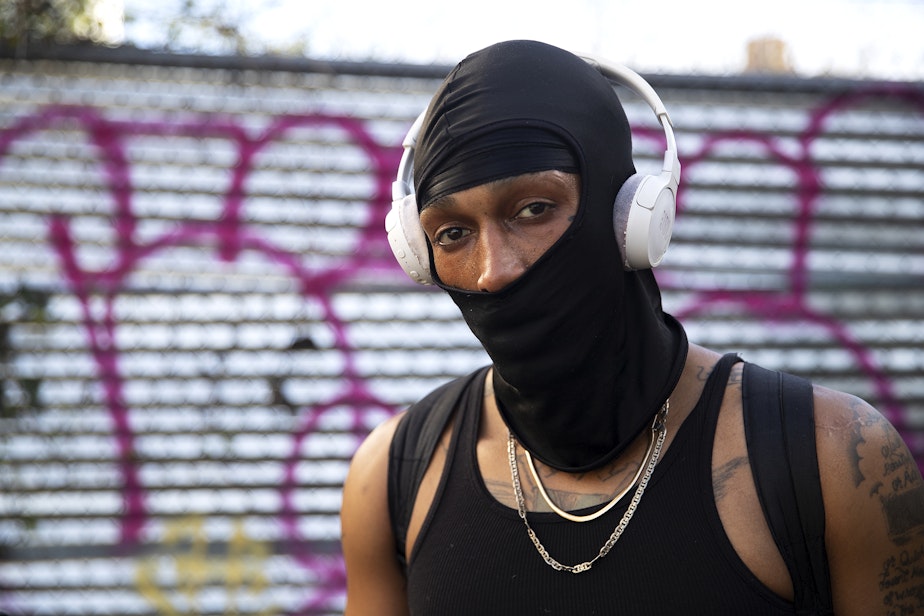
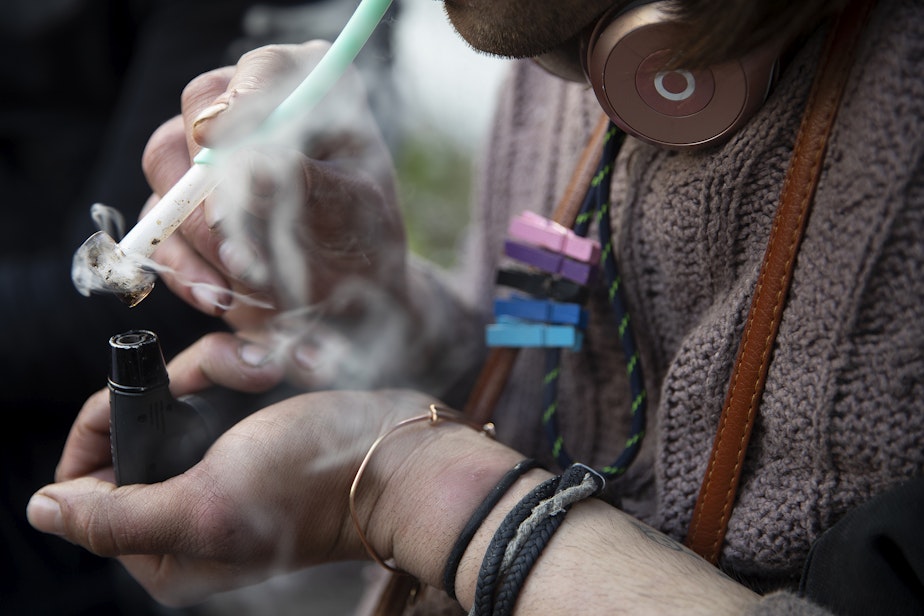
A new KUOW documentary, “Hot Spot,” examines the origins of the underground market at 12th and Jackson, why it's persisted for so long, and what policies may finally make a difference. It immerses listeners in the streets of Little Saigon, the lives of people who frequent 12th and Jackson, and the city’s efforts to reduce drug use, crime, and homelessness there.
Evidence of a black market near the corner goes back more than 15 years, and originates with local businesses. Seattle Police raided a store at the intersection for trafficking in stolen electronics in 2009. Years of investigations by federal authorities and Seattle Police have targeted grocery stores accused of illegally trading food stamps for cash. With quick cash came drug dealers looking to meet their customers when they were most flush.
Today, the primary force driving the market is fear of the effects of fentanyl withdrawal, which can incapacitate a person with pain and sickness just hours after their last hit. Fentanyl fades from a person’s body much faster than heroin, causing some to use it up to 20 times per day to avoid debilitating withdrawal symptoms.

“ All your pain receptors turn on at once and it feels like someone's stabbing you with a thumbtack a million times and you sweat and your body aches,” said Jayden, a 22-year-old who frequented the blocks around 12th and Jackson last year. “You have diarrhea uncontrollably, you throw up uncontrollably, your eyesight goes from 100 to 50, everything is blurry. It's very scary.”
RELATED: Misinformation about fentanyl exposure threatens to undermine overdose response
While fentanyl is available in many parts of Seattle, the market at 12th and Jackson stands out for its convenience. Someone looking to stave off withdrawal can sell items on the street — bottles of laundry detergent, cans of ground coffee, rolls of paper towels, folded jeans — often to lower-income residents of Little Saigon. Then they can immediately buy fentanyl from dealers who drive through regularly.
Prior efforts by Seattle Police to crack down on the sale of drugs and stolen goods there, like a high-profile push in 2022, seemed to improve conditions for a while, only for illegal activity to spring back once the police receded.
The illegal economy around 12th and Jackson, and another so-called hot spot around 3rd and Pine downtown, prompted City Attorney Ann Davison to propose what became one of last year’s most contentious pieces of local legislation: the Stay Out of Drug Area, or SODA, bill. The City Council ultimately passed an expanded SODA law with six zones throughout the city, empowering judges to ban people accused or convicted of drug-related crimes from spending time in those areas. But, so far, the law has gone almost entirely unused.
RELATED: Seattle’s city attorney stumps for newly passed SODA and SOAP laws
Then, late last year, Mayor Bruce Harrell announced an effort to expand police activity and outreach efforts in Little Saigon, as well as send workers to power wash the sidewalks three times a day. In the first two months of 2025, felony arrests were up by 51% in the neighborhood while the most urgent emergency calls were down 34%, according to the mayor’s office.
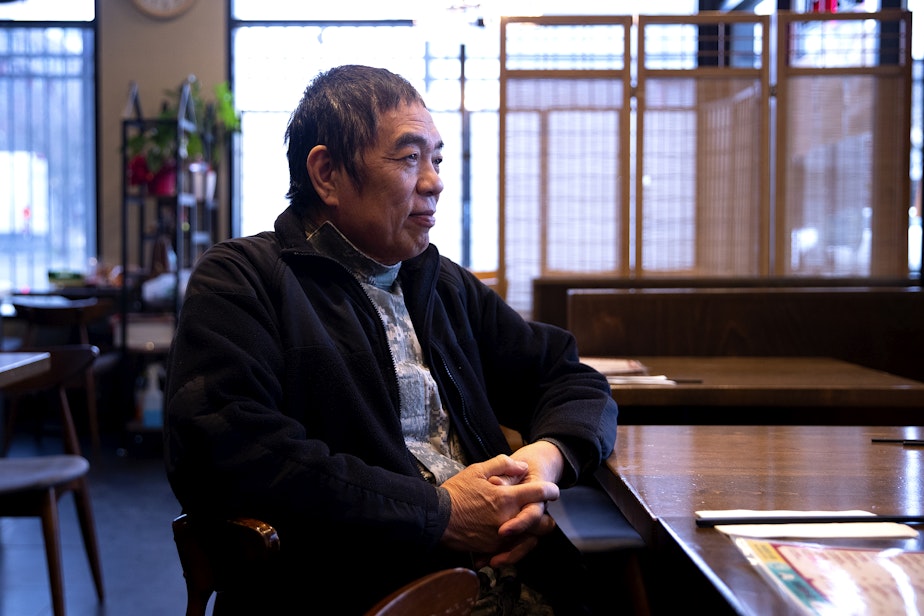
Nathalie Walton-Anderson, the mayor’s public safety director, said the efforts that began last year differ from past initiatives because they’re meant to be “consistent,” not a short-term burst of attention.
“ As of right now, there is no end time to do this,” she said.
Crowds have thinned in recent weeks at 12th and Jackson, but they seem to have moved to side streets nearby. When workers blast the sidewalks of 12th Avenue with powerwashers, people shuffle around the corner until they pass.
For those who participate in the underground market, the factors driving it haven’t changed. People who buy fentanyl and sell stolen goods at the corner recounted lifetimes of instability, poverty, and pain that ignited their drug use — and the constant threat of withdrawals, which keeps it going.
"A lot of people out here might not be the nicest, but we've all gone through things that have made us this way," said Jayden, who grew up in foster care in Yakima County. "You know, a lot of pain, a lot of sorrow. A lot of people die and overdose off these drugs. "
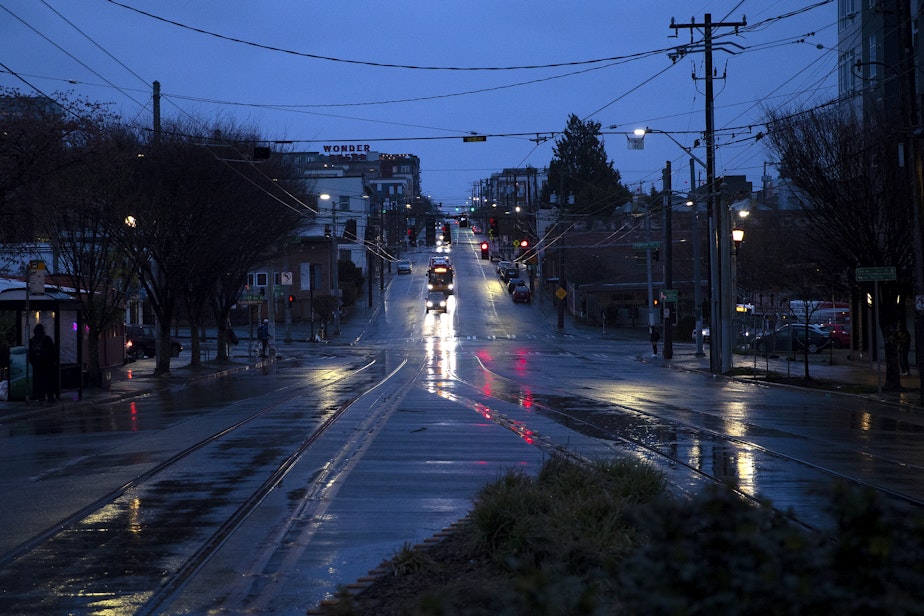
Andrew Constantino, who works for nonprofit REACH, said the despair on display at 12th and Jackson, and other hot spots, flows from dysfunction at many different levels of society: politics, social services, health care, foster care, and families.
“ What we're looking at is lower ground where all those problems pool together, and we give it one label called homelessness, but it isn't one problem,” Constantino said. ”We're just watching all of the neglect as a society that we choose to ignore pools in certain locations.”
Workers for REACH spend several hours each day walking the blocks around 12th and Jackson, offering help to people on the streets. The nonprofit said its outreach workers spoke with more than 800 people in Little Saigon from the beginning of 2024 through mid-November of that year. They referred more than 140 people to shelters. Many hundreds more got other forms of help, such as government IDs or training to prevent or reverse overdoses. Twenty-six people were connected with substance-use treatment.
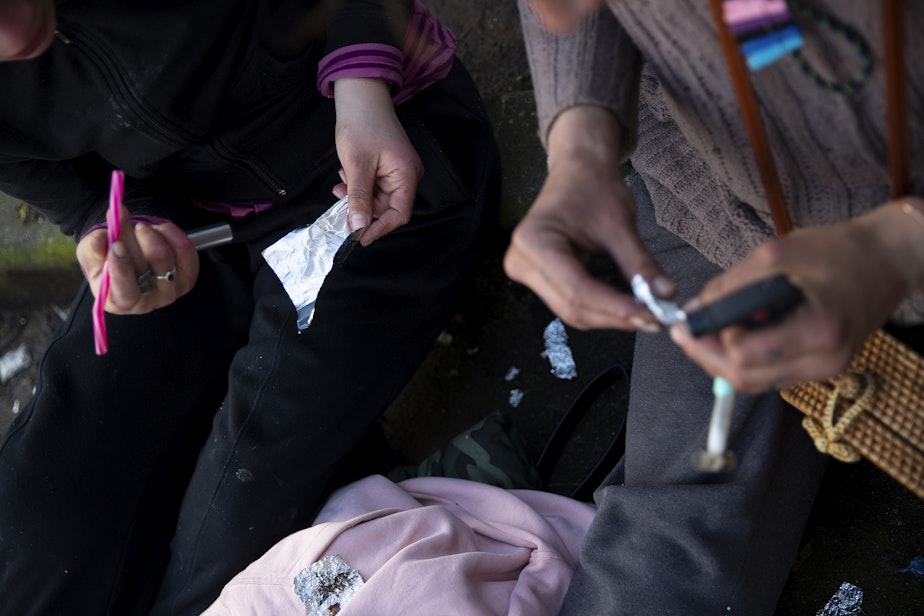
Fentanyl’s powerful and rapid withdrawals throw up barriers to recovery. Trying to stop using fentanyl has historically required white-knuckling it through withdrawal symptoms while medicines that treat opioid addiction kick in.
RELATED: In new assessment, Trump team ranks fentanyl as a top threat to U.S.
But Caleb Banta-Green, an epidemiologist who studies substance use at the University of Washington, said medical advances are poised to overcome those barriers. He said doctors are getting more comfortable prescribing the medications methadone and buprenorphine at doses high enough to stave off fentanyl withdrawal. And now an injection of long-acting buprenorphine can block opioid receptors for up to a month.
“ We fundamentally need to make these treatment medications easier to get than fentanyl,” Banta-Green said. “And fentanyl is a few dollars and available in a few minutes. So you need to beat that.”
Listen to the audio documentary by clicking play above.
















